Idea by
Ivana Palanović
Call for ideas 2017
(Prefab) Prototype House:
(Prefab) Prototype House:
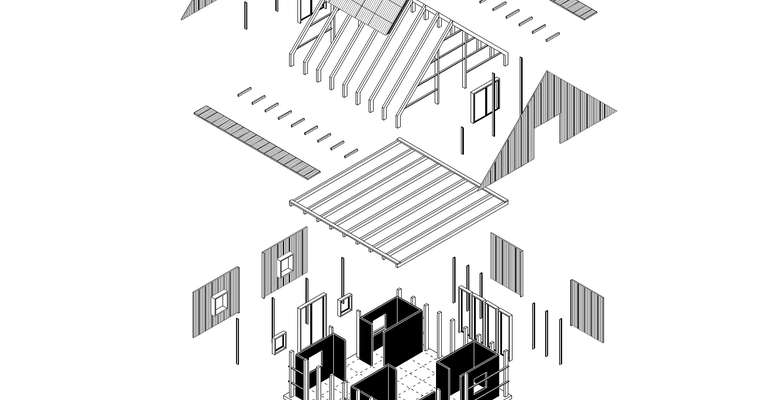
Can architecture be flexible enough to please our ‘wants’, standardize our ‘needs’ and at the same time be responsible in all social, political and economic ‘boundaries’? That is the main question of this project. It is not only the internal that defines a city, a building, a house - all that we want to see inside… but also, what is external and necessary: its edges, its borders, its periphery spaces in between and the way they communicate - outside.
Collective housing primarily occupies a tight city and periphery area, but individual housing prevails - in our region in a total of 70%. The fact is that collective housing must meet a series of requirements and standards. But what are the requirements of individual housing? Is there a way to standardize building processes of a single family house?
It should be a house that responds to all external ‘boundaries’, standardizes all ‘needs’ that are defined somewhere in between and integrates all our ‘wants’ in its interior.
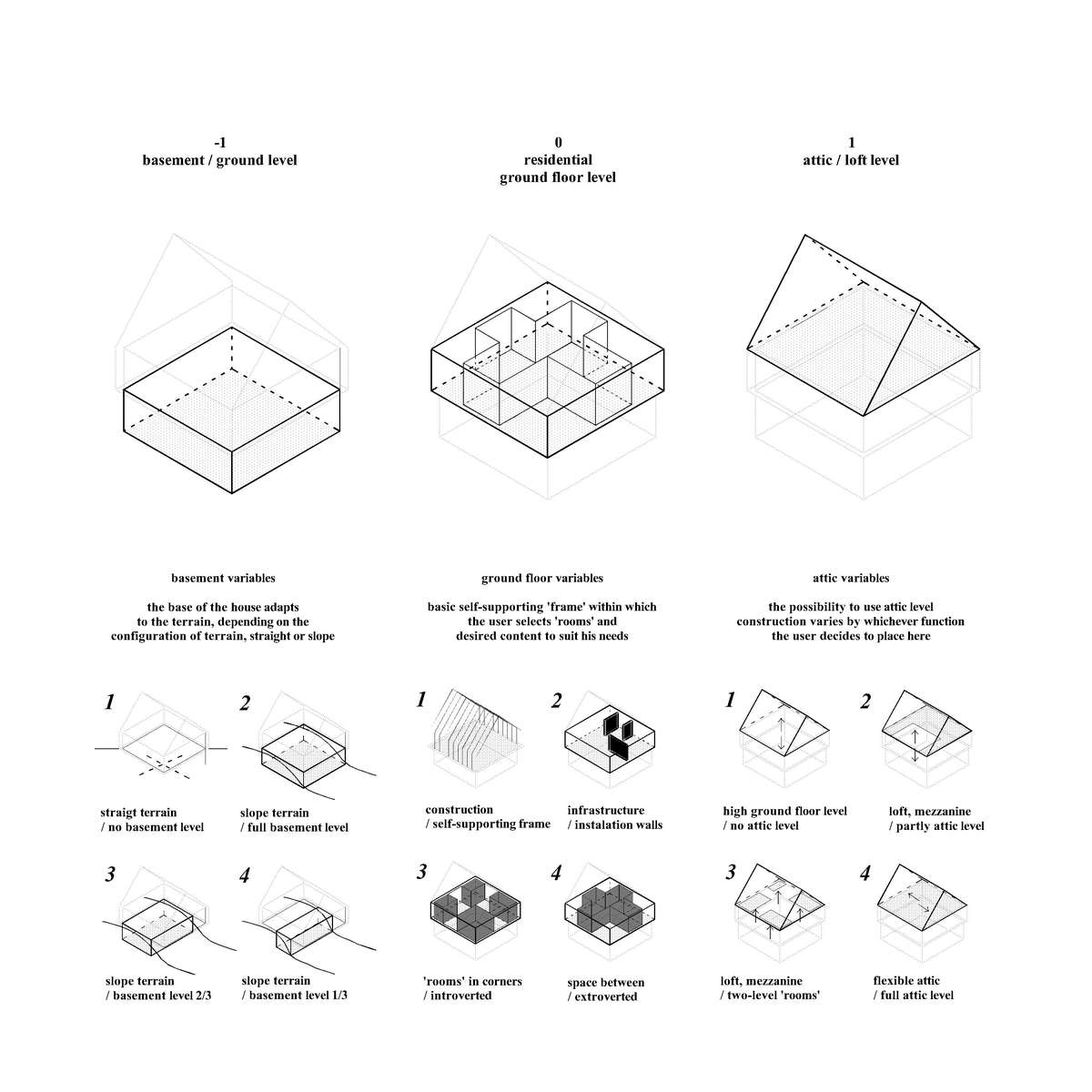
Options - The way we want to live in our house and the way we want to build our house is an option. How we live is a direct reflecton of society. It is possible to make that choice. It also implies constant change.
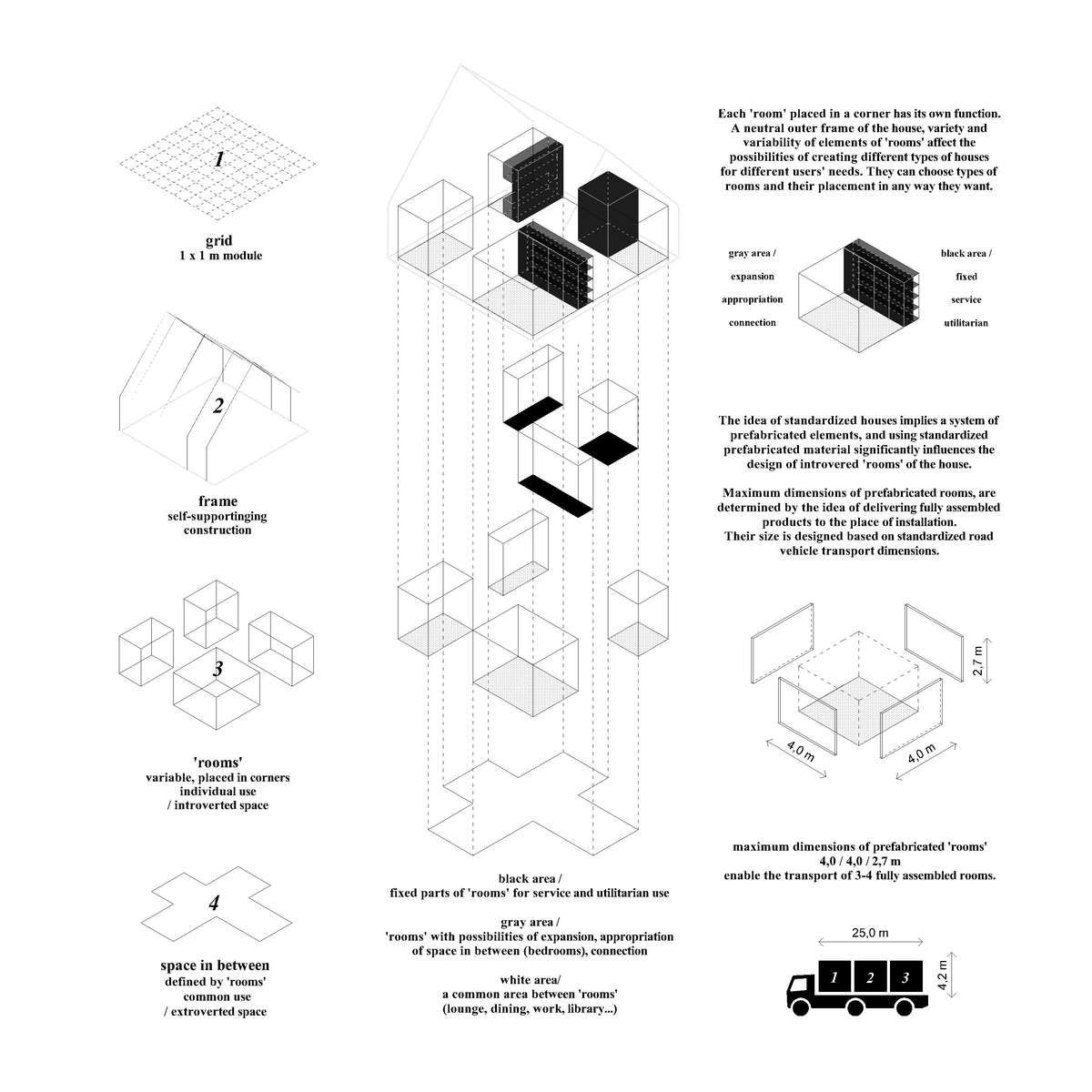
Idea - In addition to changes in housing policies, which encourage the social housing construction model, it is necessary to introduce new systems, new standards and to change the way building processes are regulated. The logical response to this problem may be simple: a prefabricated prototype house.
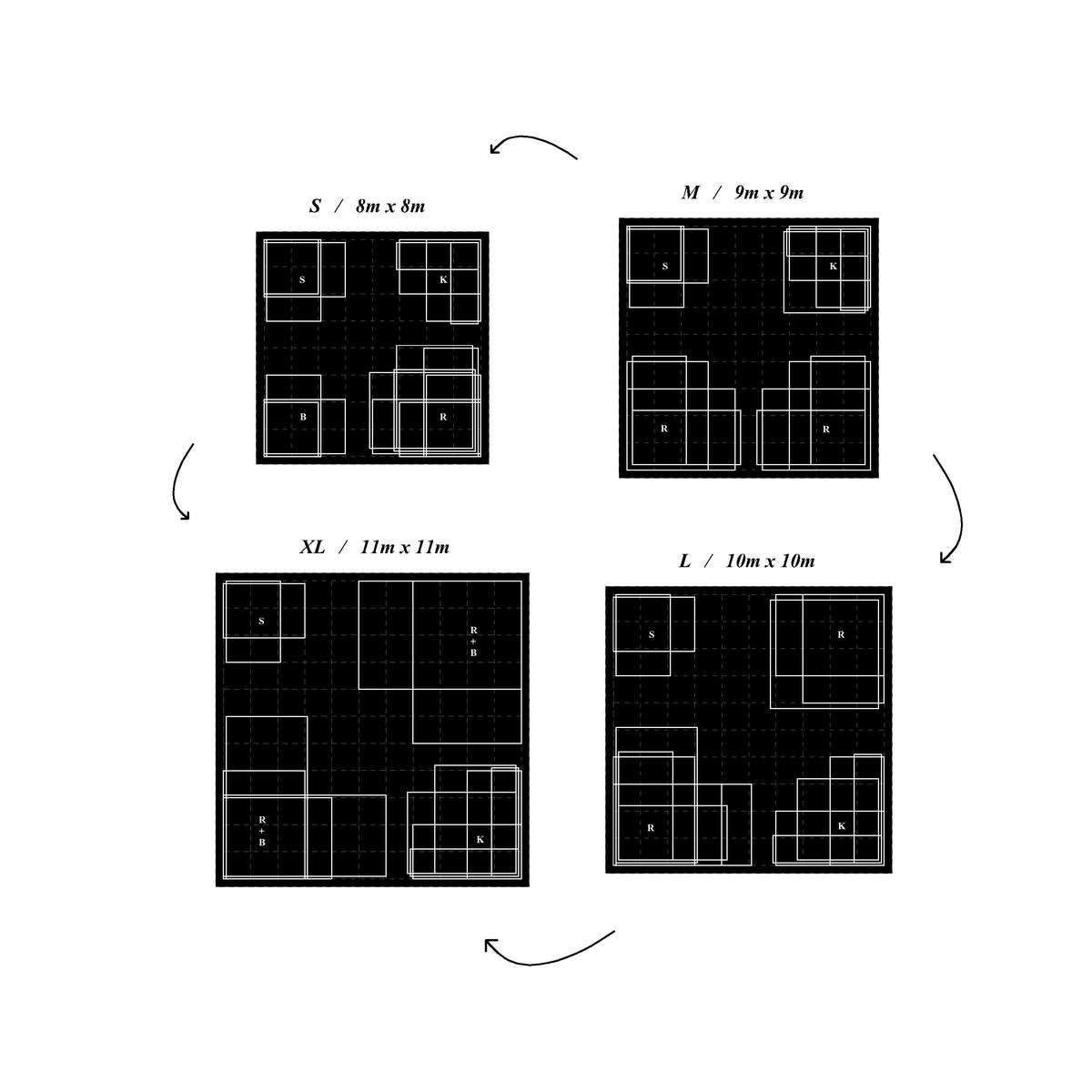
4 house sizes: S, M, L & XL - Sizing modules and variations of residential ground floor are determined by the number of users, or number of rooms that are necessary. Their sizes and their disposition are variable.
S = staircase
R = bedroom
K = kitchen
B = bathroom
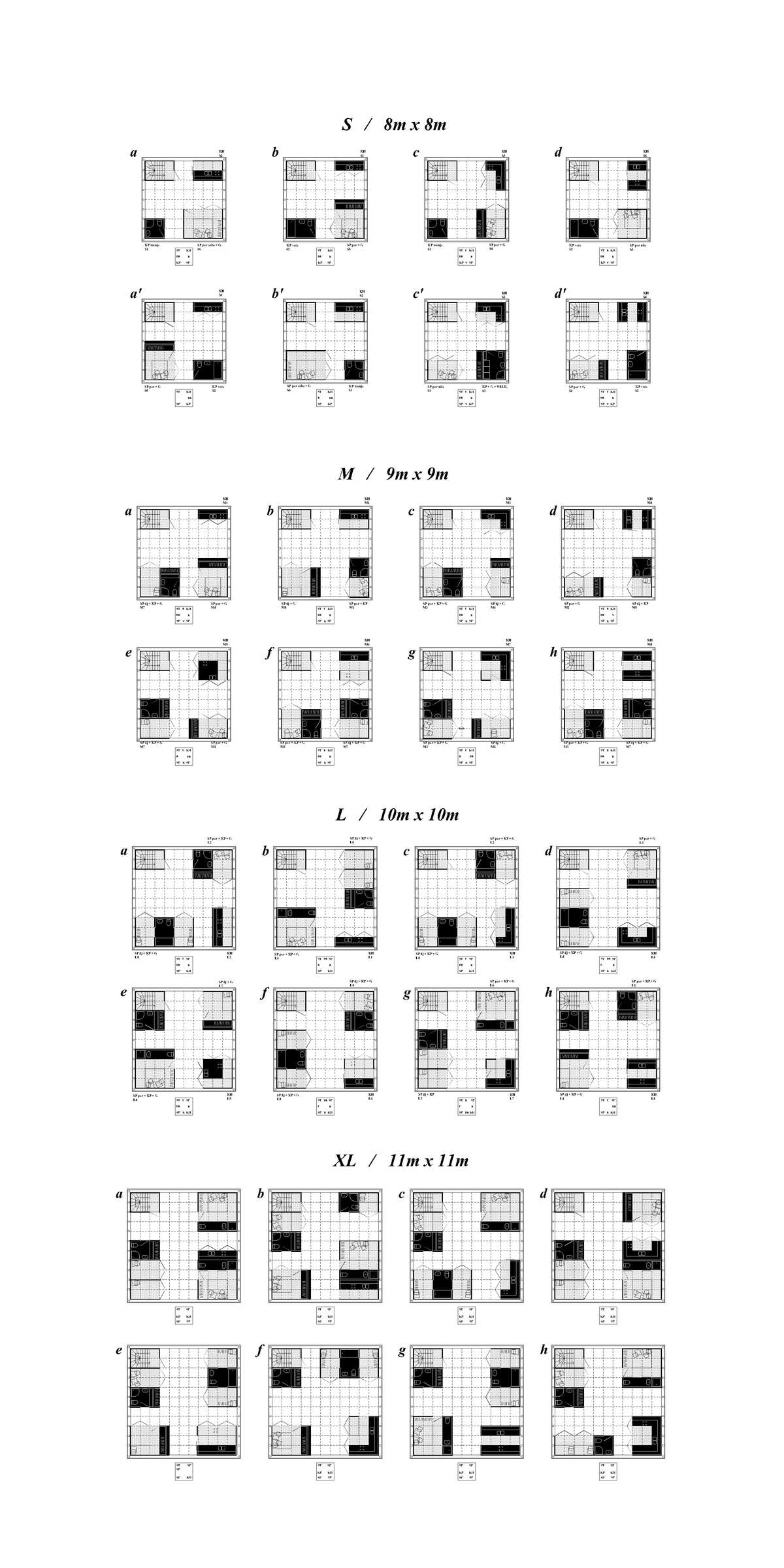
The catalogue of prefabricated houses and ‘rooms’ - All rooms are of minimum dimensions, in a closed regime adjusted only to the person intended for. If desired, the user can choose the smallest room that meets the basic needs, or a standard size room. Their disposition and interaction with the space between can be determined by individual needs.
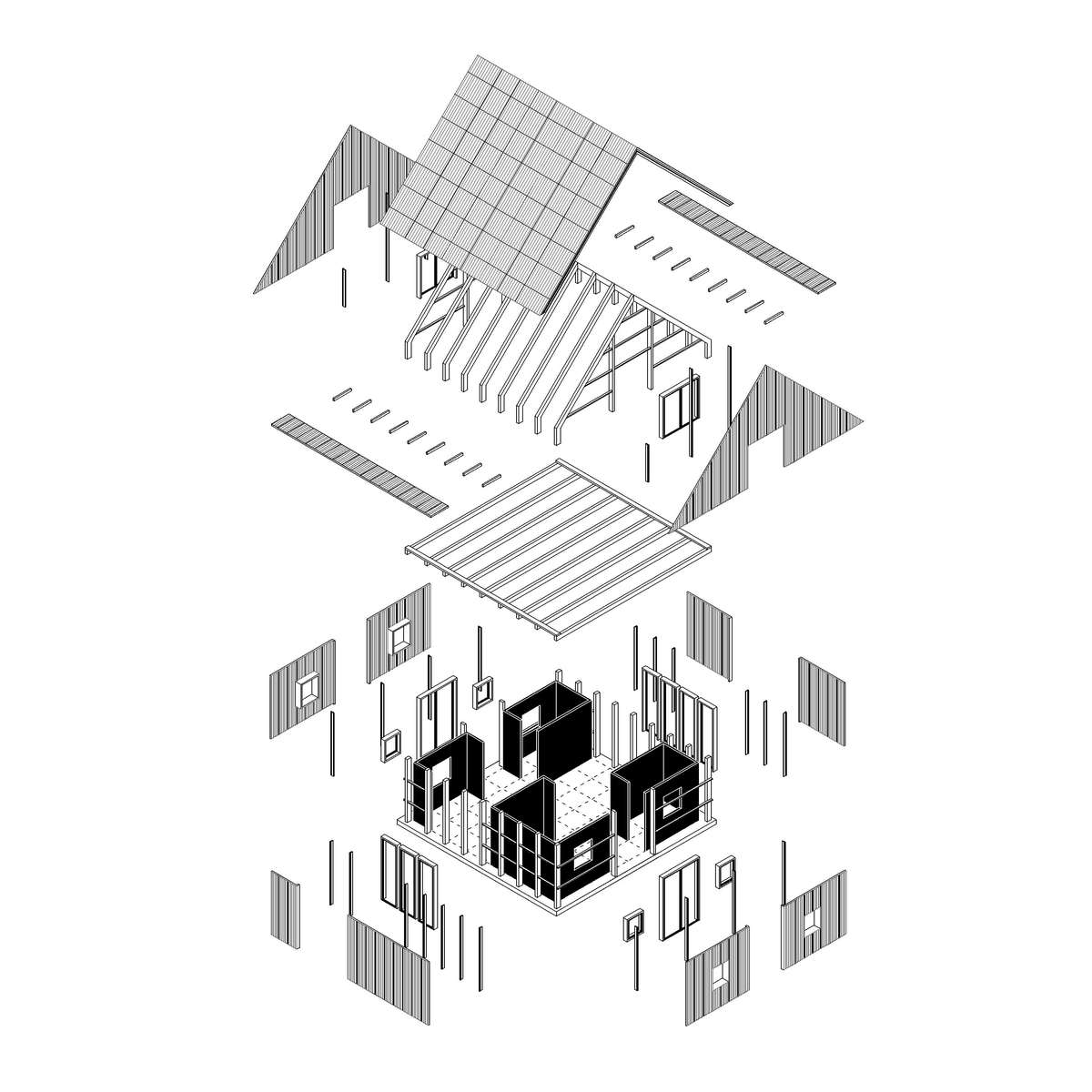
Options of wants + needs + boundaries = ‘the whole package’ – Exploded diagram of all components that are necessary to build your own prototype house.
(Prefab) Prototype House:
(Prefab) Prototype House:

Can architecture be flexible enough to please our ‘wants’, standardize our ‘needs’ and at the same time be responsible in all social, political and economic ‘boundaries’? That is the main question of this project. It is not only the internal that defines a city, a building, a house - all that we want to see inside… but also, what is external and necessary: its edges, its borders, its periphery spaces in between and the way they communicate - outside.
Collective housing primarily occupies a tight city and periphery area, but individual housing prevails - in our region in a total of 70%. The fact is that collective housing must meet a series of requirements and standards. But what are the requirements of individual housing? Is there a way to standardize building processes of a single family house?
It should be a house that responds to all external ‘boundaries’, standardizes all ‘needs’ that are defined somewhere in between and integrates all our ‘wants’ in its interior.
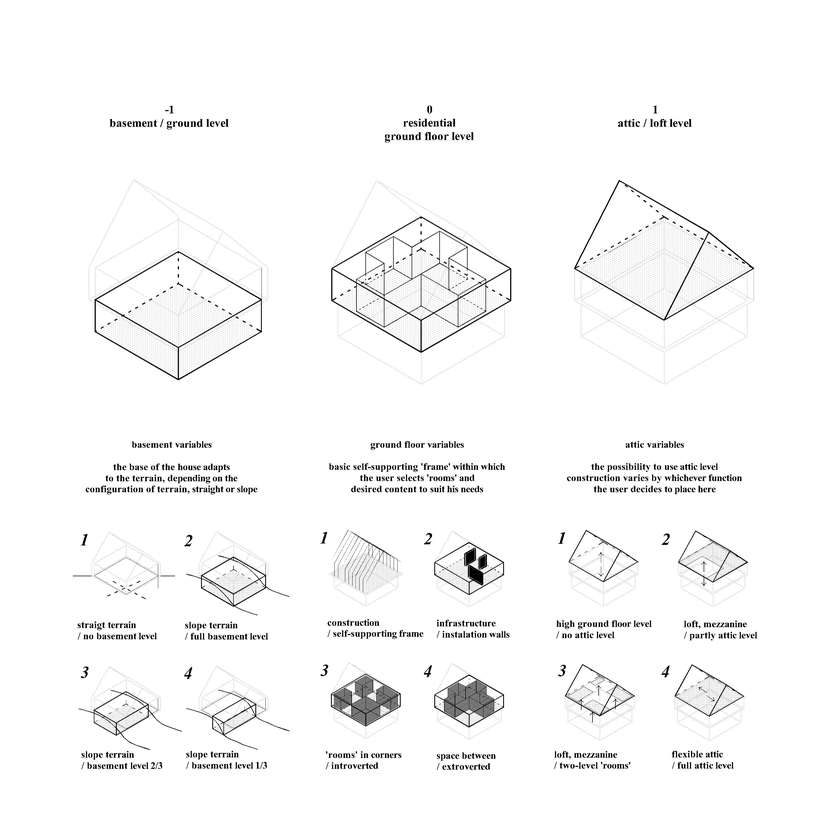
Options - The way we want to live in our house and the way we want to build our house is an option. How we live is a direct reflecton of society. It is possible to make that choice. It also implies constant change.
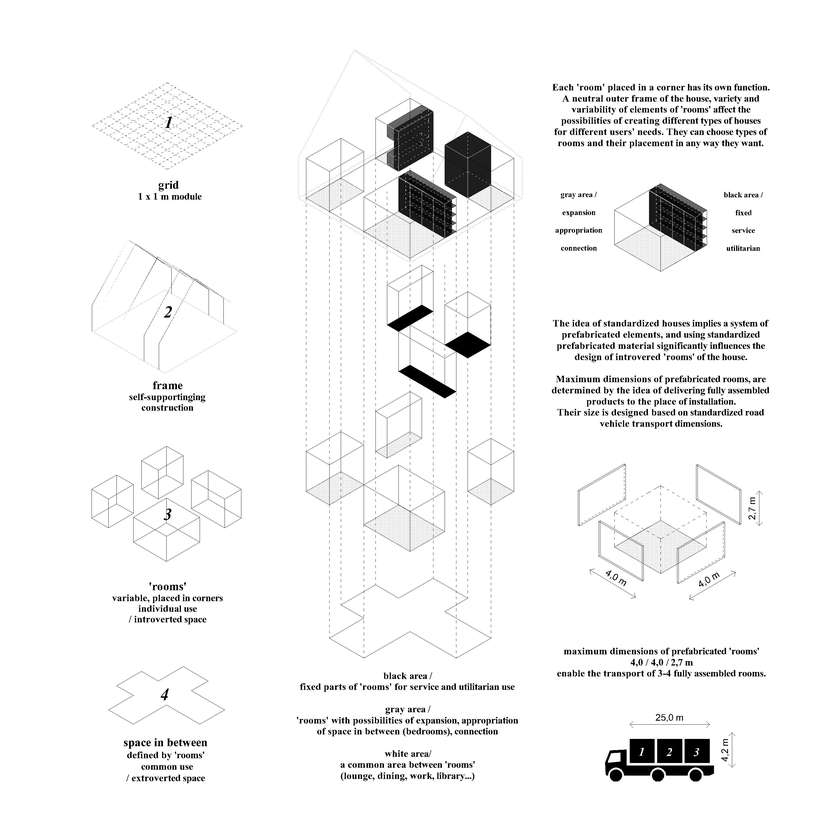
Idea - In addition to changes in housing policies, which encourage the social housing construction model, it is necessary to introduce new systems, new standards and to change the way building processes are regulated. The logical response to this problem may be simple: a prefabricated prototype house.
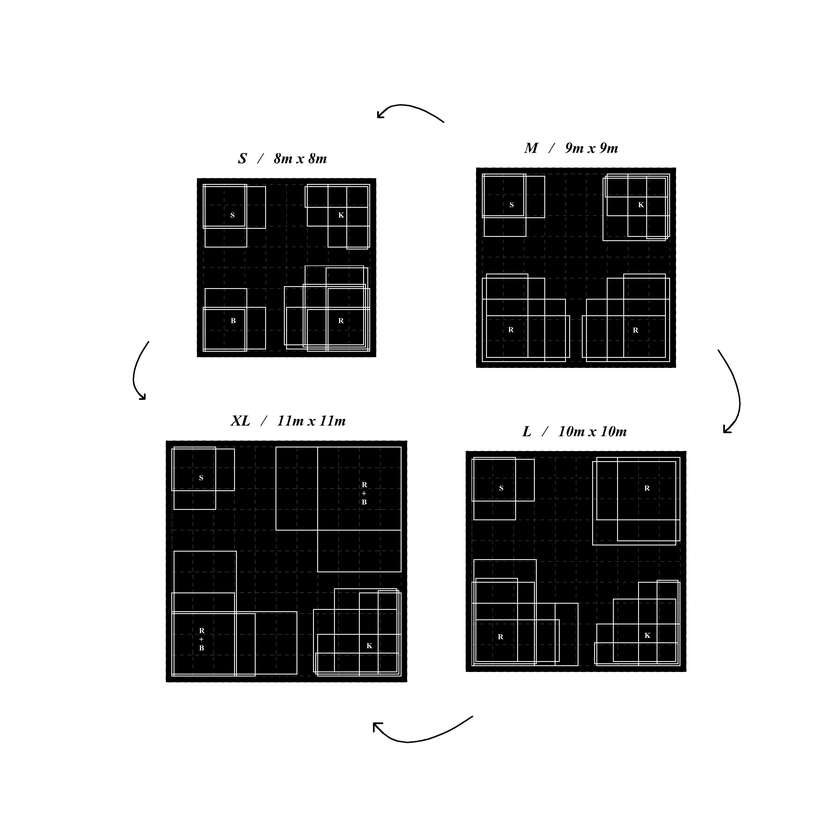
4 house sizes: S, M, L & XL - Sizing modules and variations of residential ground floor are determined by the number of users, or number of rooms that are necessary. Their sizes and their disposition are variable.
S = staircase
R = bedroom
K = kitchen
B = bathroom
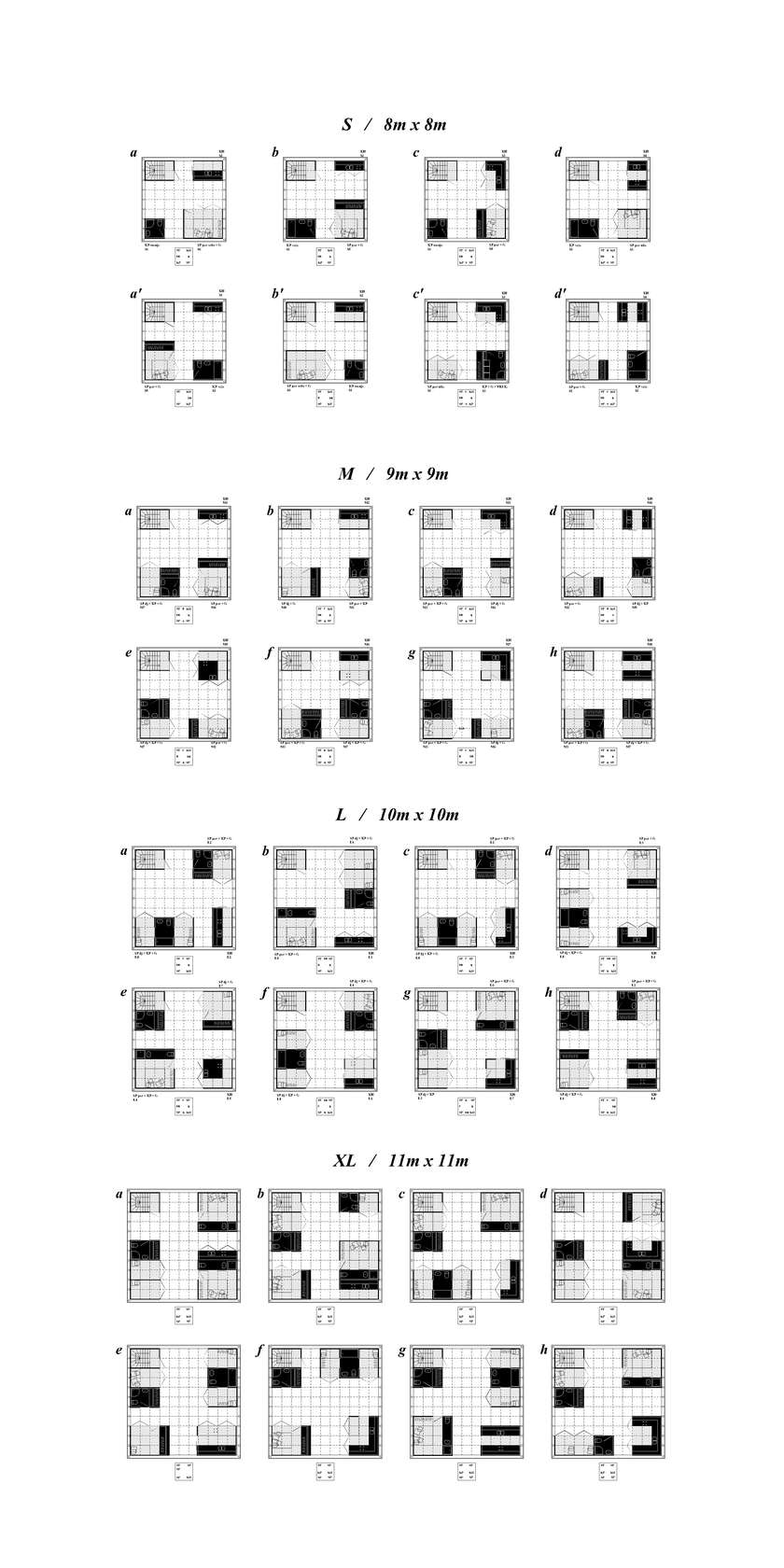
The catalogue of prefabricated houses and ‘rooms’ - All rooms are of minimum dimensions, in a closed regime adjusted only to the person intended for. If desired, the user can choose the smallest room that meets the basic needs, or a standard size room. Their disposition and interaction with the space between can be determined by individual needs.
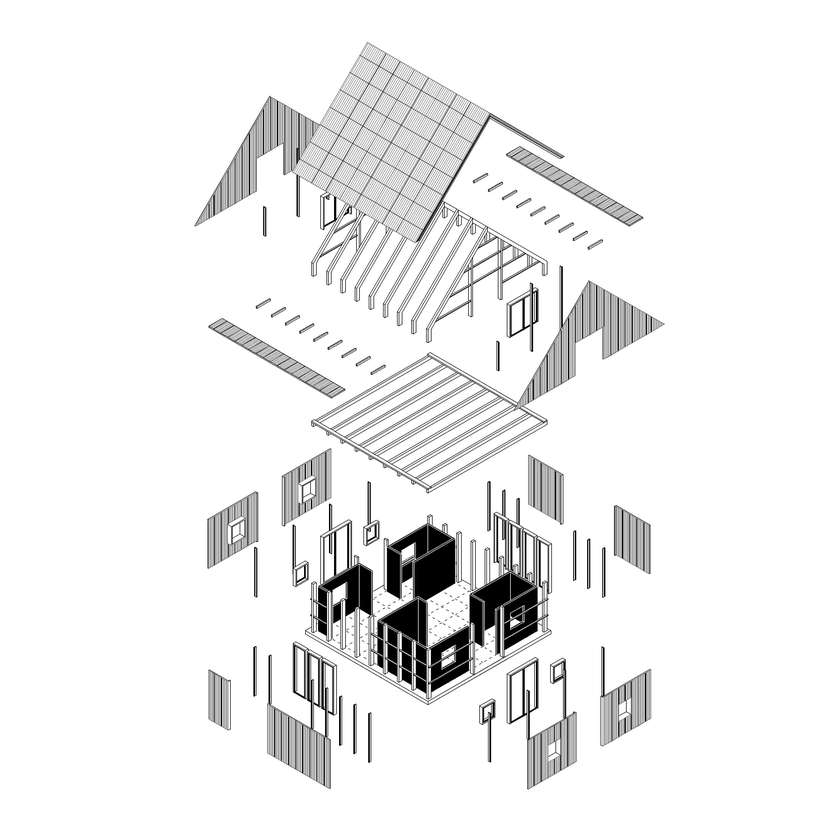
Options of wants + needs + boundaries = ‘the whole package’ – Exploded diagram of all components that are necessary to build your own prototype house.